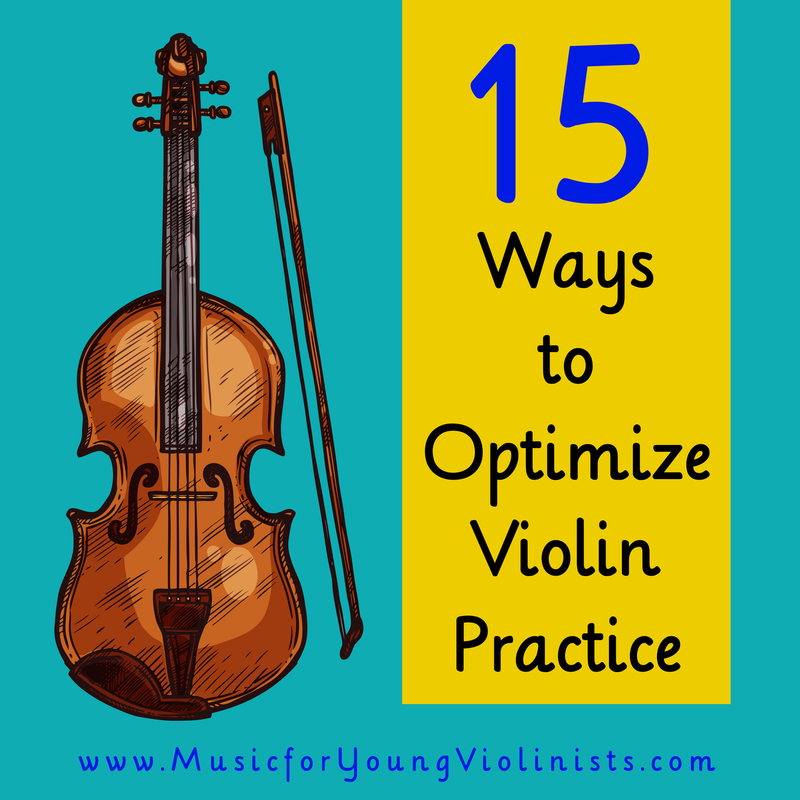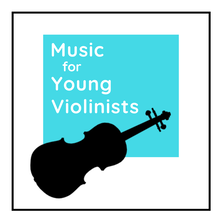|
If you have followed this project for a while you may know that one of the most profound things I ever did in my teaching career was to spend a week watching my students practice. You can learn more about what I discovered and how it was arranged here on The Practice Experiment. The 15 Ways to Optimize Violin Practice list and correlating video was created as a response to watching my students practice. Too often students were working hard but not progressing as far as they should because they were not practicing the right way. This list and video will help any violinist make better use of their practice time and reach their goals more efficiently. Teachers - you can use this to better support teaching technique, as a reference to share with your students and for professional development to expand your skills. Students - you can use this to help you practice more efficiently. Practicing smarter will help you progress faster. My passion is taking my 20+ years of teaching experience and helping you know the fastest path to success thru the trials and errors I had working with students these past 2 decades. Parents of young musicians - I know that one of the hardest jobs for you is keeping momentum in your home practice routine. Peruse the ideas on 15 Ways to Optimize Violin Practice and use the appropriate ones for your child to help keep practice creative, fresh and engaging with some new ideas. Print out the list below and keep in your violin folder as a reference. Please note, some things on the list may not be clear to you until they are demonstrated in the accompanying video. Scroll down to download this PDF
5 Comments
Music Mind Games is a music theory curriculum created by Suzuki Piano teacher Michiko Yurko and involves a series of colorful materials and progressive games for teaching music theory to children. The entire curriculum is one of the best I have ever seen for effectively teaching complex concepts in natural ways that are developmentally appropriate for children. As I progressed in my violin teaching career the reality of limited time pushed me to narrow my music theory offerings and the one thing I kept teaching consistently from the vast Music Mind Games curriculum was the Blue Jello Cards used for teaching rhythm note reading. I developed a 5 part approach for using these for violinists and also 4 challenges to engage and integrate my more advanced students in multi-level teaching situations. On a fun, personal note I credit the effectiveness of the Music Mind Games curriculum for spawning my career as a composer. After many years of teaching the basics using the Blue Jello Cards, my rhythmic dictation got so strong that when I traveled to different countries I would transcribe different languages into rhythms in my head. In this video learn a progression for using the Blue Jello Cards from the Music Mind Games curriculum in a way specific for benefitting violinists. The progression shared in the video is: 1- Speak cards (optional hand symbols). 2- Sing in ascending scale. 3- Air bow while speaking/singing. 4- Play on an open string. 5- Play as an A major scale. * Add marching to any of these steps. Have multi-level classes? Learn 4 additional ways to integrate advanced level students in a challenging and engaging way: 1- Stay on the same open string pitch as the rest of the group but do each card in a different position (i.e. 1st card in III position, 2nd card in IV position, 3rd card in II position, etc…) 2- Again, stay on the same open string pitch as the rest of the group but play each beat in a different position (II, III, IV, III, II, I, etc…) 3- Play a different scale for each card. 4- Improvise a melody. Learn more at www.MusicMindGames.com. See also: Pipe Cleaners & Music Theory/ Blue Jello Cards - Learn a cheap, hands-on, colorful and easy clean-up activity to support teaching music theory and the Blue Jello Cards to young musicians. The Magic Bag - a Metaphor for the Learning Process - Learn a "magical" way to create the identity of a learner in young students using the Blue Jello Cards. How do you teach rhythm and/or music theory in your studio? Let us know in the comments below before the next newsletter for a chance to win a set of Blue Jello Cards. Download this teaching progression chart to have for your studio here:
|
AuthorHi! It's me, Heather. I absolutely love working on the Music for Young Violinists project and all the many facets: blogging, website, music, teaching materials, freebies, videos, newsletter and giveaway contests. The best part is connecting with you so feel free to drop me a line. You can learn more about me on the "ABOUT" page. Thanks! Archives
January 2018
Categories
All
|
||||||||||||





 RSS Feed
RSS Feed
